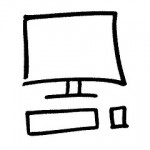In their new book, Switch: How to Change Things When Change Is Hard, Chip and Dan Heath write that change/innovation involves both the rational and emotional sides of our brains and our personalities.
In the March issue of Inc., senior editor Bobbie Gossage, wrote the Heath brothers have discovered sometimes what needs to be changed is not the employee, but the environment.
“One of the most basic mistakes that psychologists have documented is that we tend to blame people and their personalities for problems and ignore situations. One of my students, a director at Nike, thought of herself as a very open manager. She had an open-door policy, but when she asked for feedback, she learned that her staff thought she was a bad communicator.
After talking with her team, she realized the problem was the way her desk was set up.[emphasis mine] When an employee came in and sat across from her, her computer was right in the middle. She got distracted when e-mails showed up. After she rearranged her office so she would have to turn her chair away from the computer when an employee came in, she immediately got positive feedback. By fixing that environment, she fixed the problem.”
This can apply to both a corporate or home office, if you consult with clients or colleagues with a computer monitor or other object that blocks eye contact or is distracting, this will be interpreted as disinterest in them and their needs on your part.
Move that computer monitor, turn off your email – including email alarms- or confer face to face at a separate table or in comfortable arm chairs.
